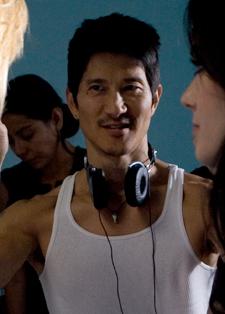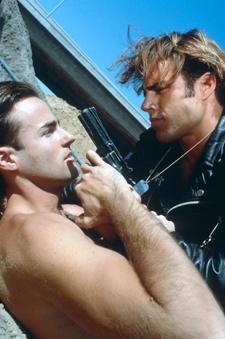
Gregg Araki Credit: Trimark Pictures/photofest
No, Gregg Araki isn’t dead yet. But with the release of 2010’s attention-grabbing Kaboom, a look back is by no means unwarranted. This month, the TIFF Lightbox hosts the first-ever retrospective program of Araki’s work in Canada. Between April 8 and 20, Toronto will celebrate 24 years of Araki’s distinctive catalogue, which centres largely on the stories and aesthetics of queer and youth culture.
It’s not surprising that a retrospective is happening here, since Araki has a long history with TIFF. In 1992, he received considerable political heat after the Sundance Film Festival premiered his breakthrough film, The Living End. The story of two HIV-positive outlaws in California was accused of promoting sexual recklessness and violence. TIFF programmer Kay Armatage was an outspoken defender of the film and underlined the need to tell all different kinds of queer stories. She subsequently premiered Totally Fucked Up and The Doom Generation in Toronto. The festival picked up Araki again with the North American premiere of his most popular film, Mysterious Skin, and its comedy companion, Smiley Face. TIFF recently held the North American premiere of Kaboom.
“Araki has been on TIFF Cinematheque’s list for some time,” says TIFF artistic director Noah Cowan, who curated and assembled the program. “When we saw Kaboom in Cannes last year, it was clear that the time had come. The film is a real summation of the various themes and visual motifs in his work.”
Kaboom tells the story of a group of sex-ragged college kids and a bizarre and fantastic armageddon conspiracy. Cowan is correct that it synthesizes many of the themes Araki has undertaken throughout his filmography: the spacey, punk haze of Nowhere, the stoner comedy of Smiley Face, the grave beauty of Mysterious Skin, and the political edge of The Living End. It’s sort of a Gregg Araki greatest hits. In a good way.
Although Araki had been working on Kaboom for years (it was originally a cable TV pilot), rumour has it that kind words from gay icon John Waters were the final push Araki needed to bring the project to a head.
“John was giving me an award and we were backstage,” Araki confirms. “He said, ‘You know, I love Mysterious Skin, but I really want to see you make an old-school Gregg Araki movie.’ I was flattered that he would even know or care what an old-school Gregg Araki movie was like. It was like a sign that Kaboom had his blessing.”
There is something remarkable about Kaboom’s success and TIFF’s program, considering that none of Araki’s films, “old-school” or recent, is quite like any of the others. This has made it difficult for him to get the recognition he deserves.
“Considered together, these films have enormous similarities and connected ideas, but they weren’t received that way,” Cowan remembers. “Queer theorists who championed his sensitivity towards gay teens in Totally Fucked Up puked on their shoes when they saw the doomsday violence of The Doom Generation.”
The magic driving Araki’s work stems from this very tension. Though each film adopts an original aesthetic and perspective on queerness and youth, they are all in conversation with each other. Araki himself delights in the sheer scope of genres his catalogue has included.
“I appreciate that all of my movies have been really different,” he reflects. “Even within the context of queer cinema, filmmakers can work in a variety of different palettes and tones and maintain their signature styles and sensibility.”
Indeed, Araki’s films intuitively straddle the conflicting grounds of time-specific storytelling and a timeless queer universe.
“My movies are a product of my imagination,” he says. “They all exist in this kind of hyperstylized, cinematic space. It’s not like I have to go hang out at the mall and do research on the way kids talk. I’m just making it up.” And he somehow never fails to get it right.
The Araki retrospective comes at a time when we may need a reminder of how far “making it up” can take an artist. Today, there isn’t the same sense of urgency around queer filmmaking there was when Araki first broke after the AIDS panic began. In fact, when asked to name a few promising young queer contemporaries, the director can’t really name any offhand. Now might be a good time to look back at how artists like him have adapted to changes in climate.
The programmers at TIFF agree, and Araki is humbled by the recognition.
“I just sort of work in my little bubble here in LA and make my movies, so I’m incredibly honoured,” he admits. Cowan, who will interview Araki before the kickoff screening of Araki’s earliest film, sees that bubble expanding. “Gregg is now finally getting his due within the international film community. And it’s about time.”

 Why you can trust Xtra
Why you can trust Xtra


